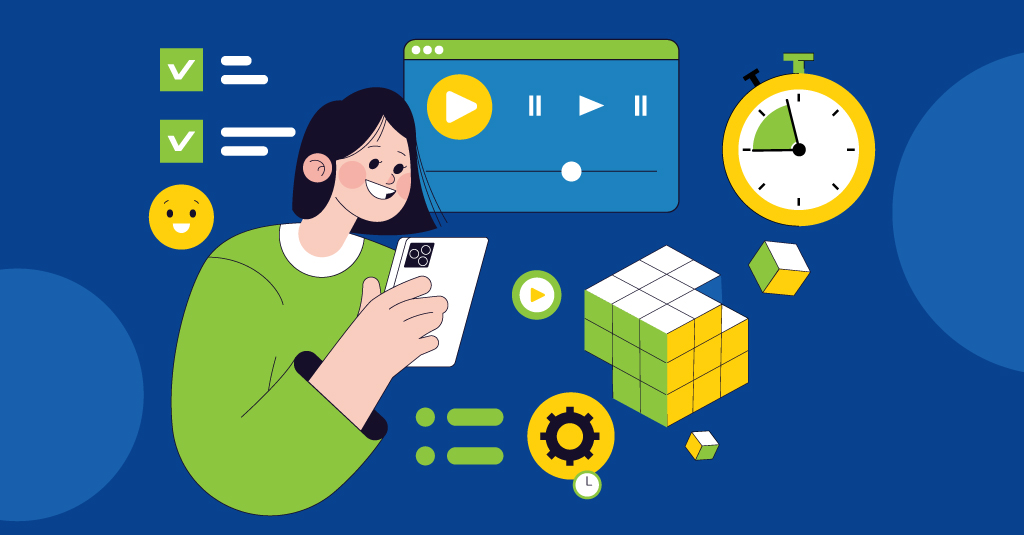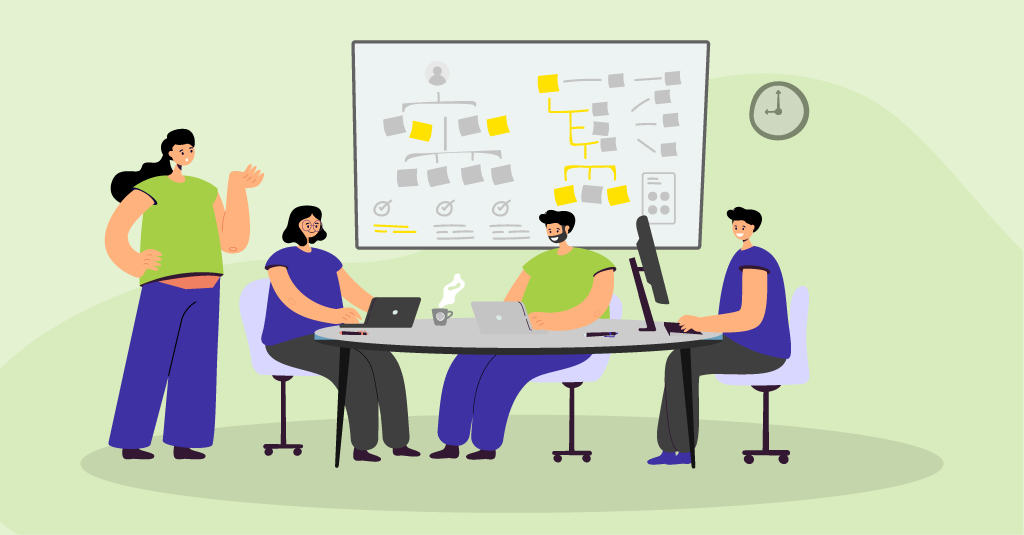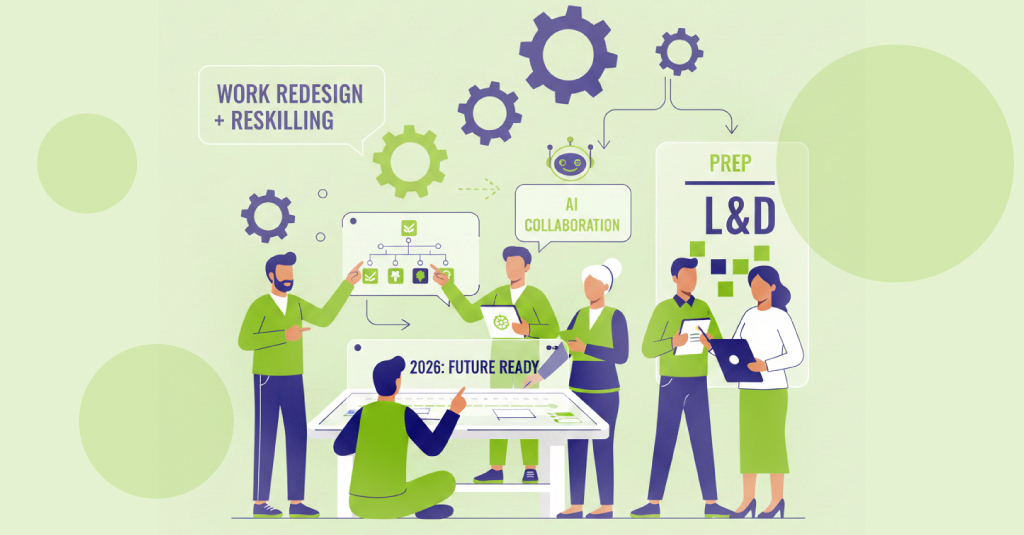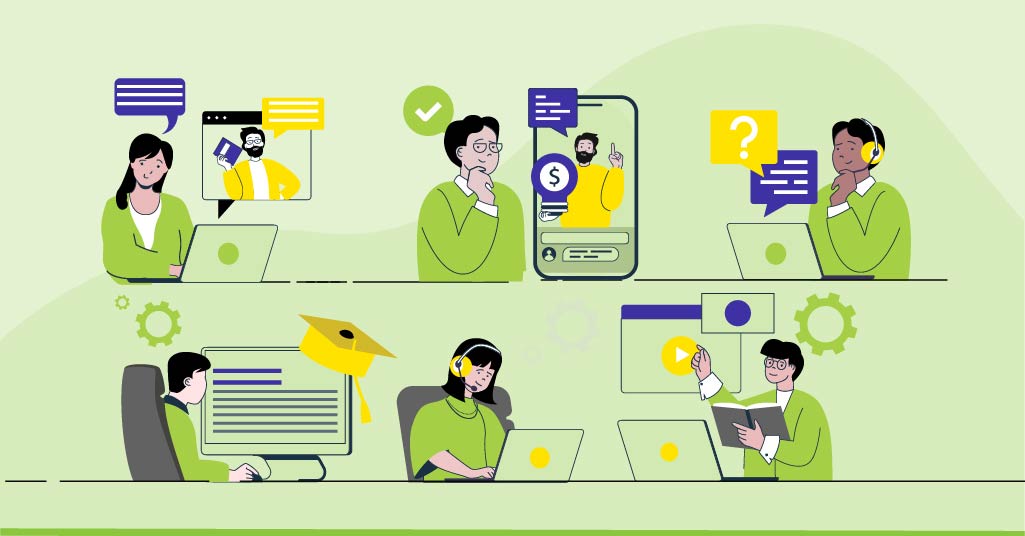Learning shouldn’t feel like climbing a mountain; it should be stress-free and supportive.
But in this day and age of digital learning, it has quite the opposite effect. In fact, research shows that the human attention span has shrunk to nearly 7 seconds, which is shorter than that of a goldfish.
Given this shift of focus, making learning more adaptable is the only solution.
Creating stackable custom eLearning modules can result in measurable outcomes, transforming training into something learners can absorb without feeling overwhelmed.
So, let me help you understand why bite-sized, stackable custom eLearning modules can support learners to continue lifelong upskilling.
But before exploring the ‘how’ of modular microlearning, it’s important to understand the ‘why.’ Let’s first look at why bite-sized learning has become essential, and why traditional training patterns are no longer enough.

What Exactly is Bite-Sized Learning?
If given a choice, many would choose learning modules that will help them gain specific knowledge rather than spending hours and days on a traditional module system.
In fact, nearly 70% of learners prefer bite-sized learning modules over lengthy formats as this fits better into their schedules and fulfils their expectation for learning that is flexible with their work environments.
These modules are designed to achieve a single learning objective– to explain a process, demonstrate a skill, or reinforce knowledge.
As each module focuses on a single objective, they can be stacked together, creating a path and building skills step-by-step.
While bite-sized learning explains the format of short, focused modules, modular microlearning takes it a step further– it’s about how these pieces connect to form structured, stackable learning journeys.
Let’s look at what that means in practice.

What is Modular Microlearning?
After understanding what bite-sized learning is, the natural next question is: how can these short modules be stacked to create a learning path that truly benefits learners and organizations?
While bite-sized learning focuses on a single objective, modular microlearning takes it to the next level.
Let’s break this down–
Micro: This means you receive a short, focused, and designed unit to meet one clear learning objective.
Modular: Here, you get modules that are stackable, helping learners to go through them in sequence, gradually building competence in a structured manner.
Put simply, micro is the format, modular is the structure, and stackable custom eLearning is the way those short modules are assembled into role-based pathways that deliver measurable outcomes.
For instance, instead of spending 5-10 minutes on a single video, learners will spend a short amount of time on each module, focusing on a specific skill or process.
So, how does this benefit the learners? Let’s take a look.

Benefits of Modular Microlearning for Upskilling
When modular microlearning is delivered as stackable custom eLearning, organizations see the impact more clearly– learning fits real schedules, sticks longer, and scales across teams. The benefits go beyond convenience; they directly support business performance and employee growth.
Flexibility & Accessibility: With the tight schedule of an employee, learning must be done on the go. With modular microlearning, they can dip into each module between meetings, breaks, or even during their commutes– making it adaptable to their work schedule.
Retention & Engagement: This model of learning reduces cognitive overload and is easier to revisit. By stacking these learning units, organizations create opportunities for spaced repetition, which is a proven way to improve retention, as these modules respect their attention span and workload.
Customization & Relevance: As the name suggests, custom stackable eLearning modules are created as per role, team, or industry– ensuring their relevance to learner’s day-to-day responsibilities.
Scalability: As these modules are reusable across multiple learning pathways, they can support both onboarding and refresher programs. This makes it cost-effective, and organizations don’t have to spend more on creating it from scratch every time.
Just-in-Time Learning: In this model of learning, workplace challenges can be tackled easily as learners can pull up the exact module at the time of need– whether it is learning a new process, mastering a tool, or refreshing their skills.
So, it’s not just beneficial for the employees, it also showcases better business outcomes.
Now the next question is, how do you ensure these benefits?

How to Design Effective Modular Microlearning Programs?
Stacking the modules is not just about delivery– it is about how you design the pathway. To ensure these measurable outcomes, modular microlearning must be built by keeping a few points in mind:
-
Design modules to achieve a single learning goal.
-
Incorporate scenarios, short activities, or simulations.
-
Choose formats that are easy to grasp– like videos or infographics.
-
Align the modules in a logical sequence, so learners progress smoothly.
-
Connect each module to role-specific skills, making it more relevant.
These design principles ensure that modular microlearning evolves from isolated lessons into stackable custom eLearning journeys that actually support lifelong upskilling.
But the true impact of modular microlearning comes when these journeys extend beyond single training events and become part of an employee’s long-term growth. This is where modular microlearning plays an important role in supporting lifelong upskilling.

How Modular Microlearning Supports Lifelong Upskilling
We’ve always been told that learning stays with us for life, but in reality, traditional training often fades quickly. Modular microlearning proves otherwise. Modular microlearning lets you revisit and build upon the exciting skills and turn learning from an idea into a practical, sustainable reality.
As these modules are short, stackable, and easy to revise, learning can turn into a lifelong, continuous habit.
On the other hand, organizations can create a workforce that isn’t just trained once but is always ready for what’s next– providing support to their individual careers and to the business.
While the idea of lifelong learning is clear, implementing the same in organizations requires expertise and experience in this field. This is where Upside learning helps organizations turn their upskilling ideas into practical learning solutions.

How Upside Learning Supports Modular Microlearning
Upside learning is one of the leading providers of adaptive, result-driven digital eLearning solutions. They have been helping organizations upgrade their traditional training into stackable custom eLearning modules- making learning more engaging, accessible, and goal-oriented.
Upside Learning builds personalized eLearning modules using interactive content approaches with modular microlearning units, ensuring that learning is:
-
Accessible anytime and from anywhere.
-
Broken down into short and easily digestible forms.
-
Rich is visuals, animations, and interactive elements.
-
Measurable and offers profitable outcomes.
To see how these principles work in real life, here’s a bite-sized overview of how Upside Learning helped an organization enhance sales performance.
A leading life insurance company faced challenges with Flash-based sales training that wasn’t accessible on multiple devices. They partnered with Upside Learning to deliver a mobile-compatible version of their existing content.
Solution:
-
The course was redeveloped with nuggetization. This module was mobile-compatible, presented in multiple languages, and broken into short, focused units.
-
The Expert-led videos were enhanced with visuals and animations for an engaging learning experience.
Impact:
-
The resulting development helped learners gain anytime-anywhere access to navigate directly to a specific topic.
-
Nuggetization modules helped in enhancing the videos, increasing engagement, and retention.
-
This assisted the company in becoming more scalable and building a modular solution for ongoing learning and just-in-time performance support.

The Future of eLearning is Modular Microlearning
As the attention span shrinks and roles evolve, traditional training methods are no longer holding up. Learners today want learning to be adaptable as per their schedules and roles.
And this is why stackable custom eLearning, built on modular microlearning, becomes essential.
For organizations, this means not just training employees– but building a culture of lifelong upskilling that drives both individual careers and overall business performance.
Upside Learning helps organizations in these scenarios by designing and delivering stackable custom eLearning through modular microlearning.
The takeaway is simple: when learning is modular, stackable, and custom-designed, it lasts.
FAQs on AI-Powered Skill Gap Analysis & Adaptive Learning
AI-powered skill gap analysis uses machine learning to assess current employee competencies and identify areas that need development. It supports more targeted training interventions.
By analyzing learner behavior and performance, AI delivers adaptive content aligned to individual skill needs and learning preferences.
With rapid changes in technology and workforce demands, real-time skill visibility is essential for proactive upskilling and talent retention.
AI-based learning systems use machine learning, natural language processing, predictive analytics, and learning experience platforms (LXPs).
Not at all. AI assists with automation and personalization, but designers ensure the learning experience is relevant, ethical, and aligned with organizational goals.
Adaptive learning increases engagement, speeds up skill acquisition, and reduces time spent on irrelevant training content.
Yes, when using reputable platforms that comply with data regulations like GDPR and CCPA, with proper data encryption and governance.
Industries with rapid innovation cycles or strict compliance needs, like tech, healthcare, and finance, see the biggest gains.
Using models like Kirkpatrick’s and Phillips ROI, organizations assess impact via learner outcomes, performance metrics, and business KPIs.
Expect deeper personalization, real-time nudges, career pathing insights, and integration with on-the-job performance tools.
Citations




















